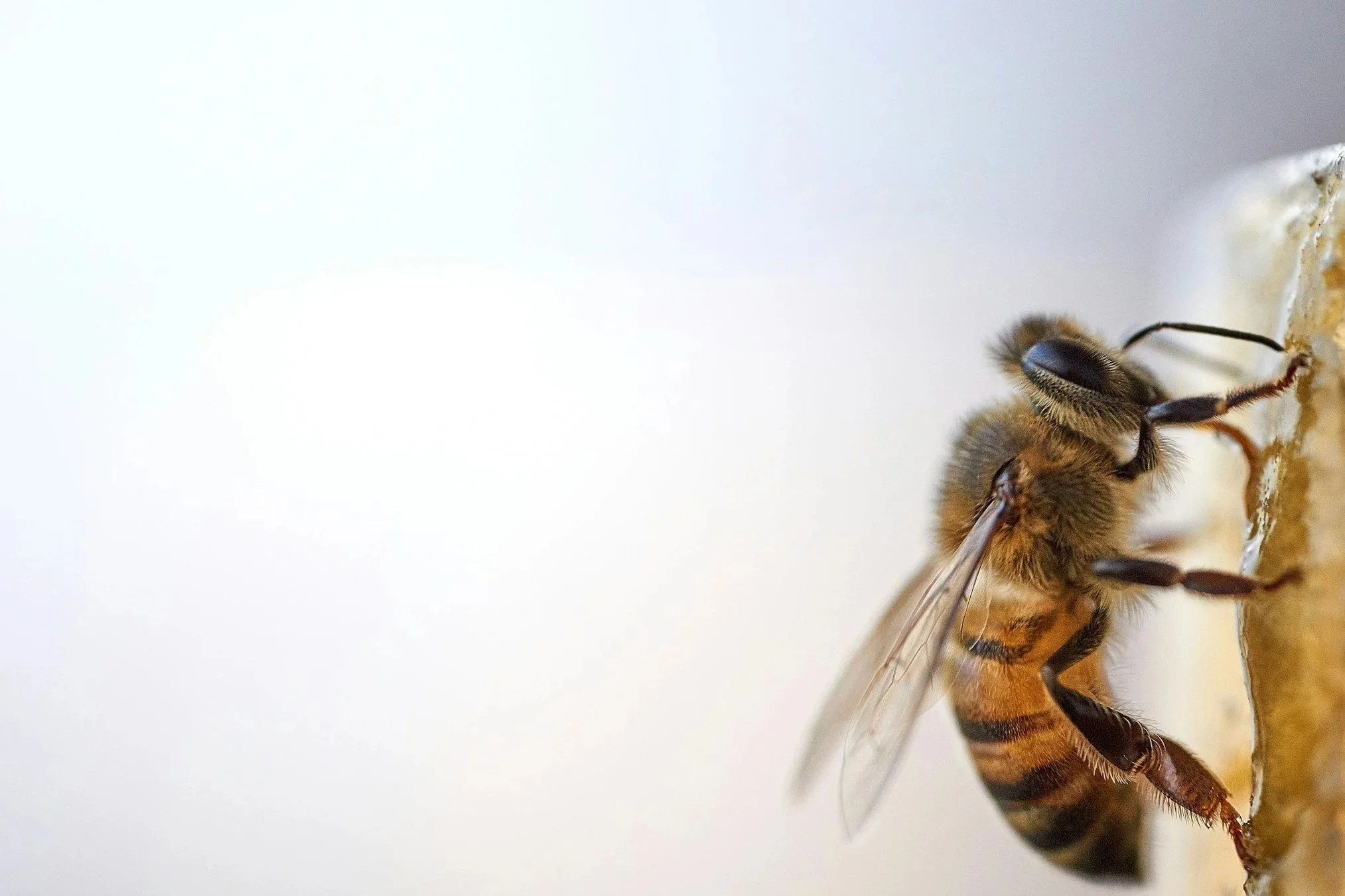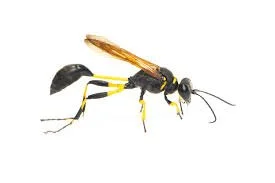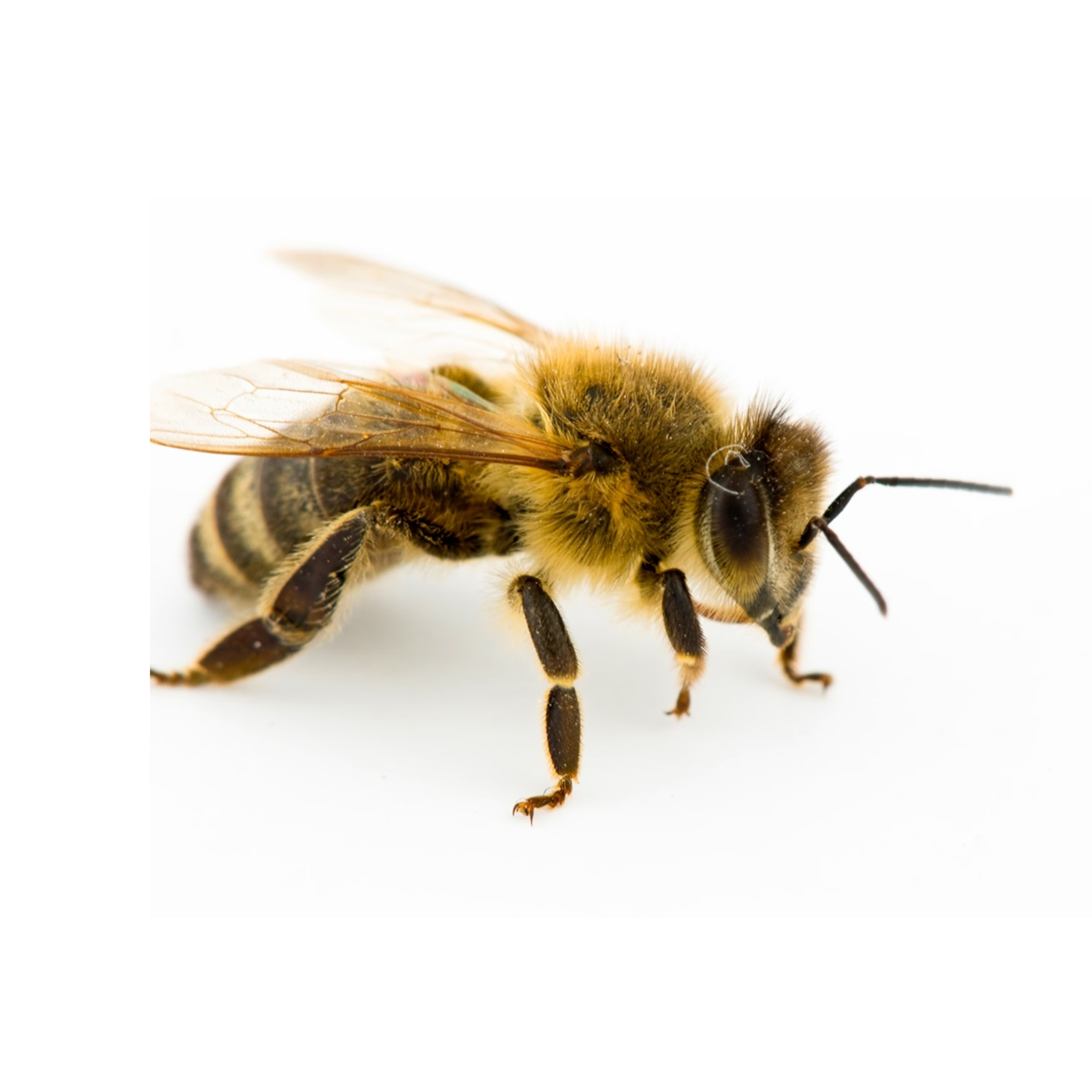
If you live in East Texas, encountering wasps and bees is almost inevitable. These buzzing insects play important roles in nature—but when they build nests too close to your home, they can quickly turn from helpful to hazardous. Understanding which species are most common, how to identify them, and when to call for help can make all the difference in keeping your family safe and your outdoor spaces comfortable.
Bee & Wasp Information
What Are Wasps and Bees and Why Do They Matter
Wasps and bees are among the most recognizable flying insects in Texas, known for their stings, distinct buzzing sounds, and importance to the local ecosystem. While many species play a crucial role in pollination and pest control, others become a serious nuisance—or even a danger—when they nest near homes or high-traffic areas.
General Traits of Wasps and Bees:
Two pairs of transparent wings and slender, segmented bodies
Six legs and prominent antennae
Many have distinctive yellow, black, or brown striping
Most are active during warm months (spring through early fall)
Social species live in colonies with queens, workers, and drones; solitary species build small, individual nests
Capable of painful stings—wasps can sting multiple times, while most bees can sting only once
Where They Nest and Hide:
Under eaves, decks, porches, or rooflines
In shrubs, trees, wood piles, or fence posts
Inside wall voids, attics, or sheds
Underground burrows or hollow logs (for some bee and yellowjacket species)
Why They Matter:
Safety Concerns: Stings can be painful and may trigger allergic reactions or anaphylaxis in sensitive individuals.
Structural Issues: Nests in walls or attics can cause damage and attract secondary pests.
Outdoor Disruption: Aggressive species make it difficult to enjoy yards, patios, or play areas.
Environmental Impact: Some bee species are beneficial pollinators and should be carefully relocated rather than exterminated.
-

Paper Wasp
¾–1 inch long, brown to reddish with yellow markings. Builds open, umbrella-shaped nests under eaves or decks; semi-aggressive when defending nest.
Typical Nesting Sites: Under porch roofs, eaves, sheds, and outdoor furniture
Venom Risk / Notes: Moderate sting risk; can sting multiple times
-

Yellow Jacket
½ inch long, bright yellow and black. Very aggressive; defends nest vigorously; scavenges at picnics and garbage cans.
Typical Nesting Sites: Underground burrows, wall voids, shrubs, or tree roots
Venom Risk / Notes: High venom risk; stings repeatedly and can swarm
-

Bald-Faced Hornet
¾–1 inch, black with white facial markings. Builds large, enclosed paper nests in trees or on buildings; extremely defensive.
Typical Nesting Sites: High in trees, shrubs, or building corners
Venom Risk / Notes: High venom risk; aggressive colony defenders
-

Mud Dauber
¾–1 inch, slender with long “thread-waist”. Solitary; builds mud tube nests; rarely aggressive.
Typical Nesting Sites: Under eaves, attics, or garages
Venom Risk / Notes: Low sting risk; beneficial because they hunt spiders
-

Cicada Killer Wasp
Up to 1½ inches, brown with yellow markings. Solitary ground burrower; males guard territory but don’t sting.
Typical Nesting Sites: Bare soil, lawns, near sidewalks
Venom Risk / Notes: Low sting risk; intimidating but mostly harmless
-

Carpenter Bee
¾–1 inch, shiny black abdomen. Drills round holes in untreated wood to nest; males territorial but don’t sting.
Typical Nesting Sites: Wooden decks, siding, fences
Venom Risk / Notes: Moderate risk to wood structures; minimal sting danger
-

Honeybee
½ inch, golden brown and black. Social pollinators living in hives; only sting once.
Typical Nesting Sites: Hollow trees, wall cavities, beekeeping boxes
Venom Risk / Notes: Important pollinators—should be relocated, not killed
-

Bumblebee
¾ inch, fuzzy black and yellow. Social but generally gentle; sting if provoked.
Typical Nesting Sites: Ground burrows, under sheds, compost piles
Venom Risk / Notes: Moderate risk if disturbed; beneficial pollinators
Where They Are Found & How They Behave
Where They Nest and Hide
Under eaves, decks, porches, or rooflines
In shrubs, trees, wood piles, or fence posts
Inside wall voids, attics, or sheds
Underground burrows or hollow logs (for some bee and yellowjacket species)
Indoors
Basements, attics, storage areas: Dark, undisturbed places are ideal for recluses and spiders that dislike disturbance.
Corners, ceilings, behind furniture, closets: Web-building spiders may spin webs in hidden corners or near light sources (which attract insects).
Around doors, windows, vents: Spiders may enter through small openings.
In wall voids or crawlspaces: Some species navigate inside walls in search of prey or shelter.
Behavior & Activity Patterns
Wasps and bees in East Texas follow distinct seasonal and daily activity patterns that help explain when and why they become a problem around homes.
Seasonal Activity: Most wasps and bees become active in early spring as temperatures rise. Colonies grow rapidly through the summer, reaching peak population in late summer or early fall. During this time, wasps can become more aggressive as food sources decline and they defend their nests more fiercely.
Daily Patterns: Both bees and wasps are diurnal, meaning they’re most active during daylight hours—especially warm, sunny mornings and afternoons. At night, most return to their nests to rest.
Feeding Habits:
Bees primarily seek nectar and pollen from flowers, playing a vital role in pollination.
Wasps are both predators and scavengers, feeding on insects, sweets, meats, and sugary drinks, which often brings them into contact with people outdoors.
Territorial Behavior: Wasps are more defensive of their nests than bees and may sting repeatedly when threatened. Bees generally sting only when provoked or to protect their hive.
Nest Expansion: Social species—like paper wasps, hornets, and yellowjackets—continually expand their nests throughout the summer. A small early-season nest can turn into a large colony by fall if left unchecked.
The Dangers of Wasp and Bee Infestations
While a few foragers around your flowers are normal, multiple nests or heavy activity near entrances, play areas, or attics can become a hazard. Wasp colonies grow throughout the summer, and by late season they can number in the thousands. Bees nesting in walls or attics can cause long-term structural issues and attract pests that feed on honey or wax.
If you notice heavy buzzing activity, visible nests, or swarming behavior around your home, it’s best to call a professional. Attempting to remove a nest yourself can result in painful stings or property damage.
Don’t risk painful stings or recurring nests—let the experts handle it safely. Contact Total Home Pest Solutions today for a free inspection and professional wasp and bee control that keeps your family and property protected.
FAQs
1. How can I tell the difference between wasps and bees?
Wasps are usually slimmer with smooth bodies, while bees are rounder and hairy. Wasps tend to be more aggressive, especially when disturbed.
2. Are all bees protected?
Honeybees are federally protected in many contexts because of their role in pollination. Professional pest control companies can safely relocate them rather than destroy the colony.
3. Why do wasps keep coming back to the same area?
Wasps often return to familiar nesting spots year after year. Old nest material, odors, or shelter make those areas attractive. Prevent future nests by sealing gaps and removing old debris.
4. What should I do if I find a large wasp or bee nest?
Stay calm, keep your distance, and call a licensed pest control professional. DIY sprays often agitate the insects and make matters worse.
5. Do wasps die after stinging like bees?
No. Wasps can sting multiple times, while honeybees die after one sting.
6. How can I prevent wasps or bees from nesting around my home?
Keep trash bins tightly sealed, maintain landscaping, and check eaves and porch corners regularly for early nest formation.
